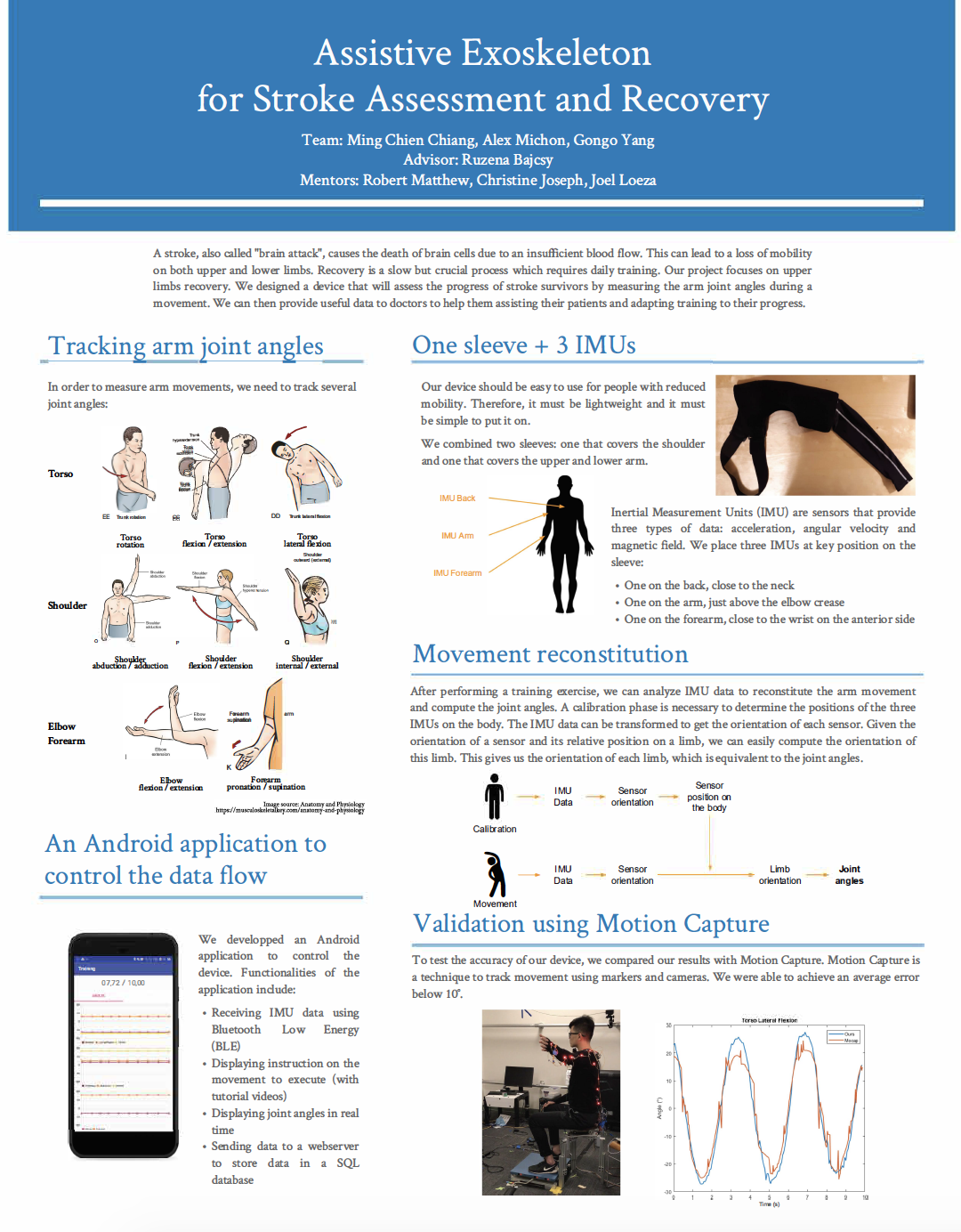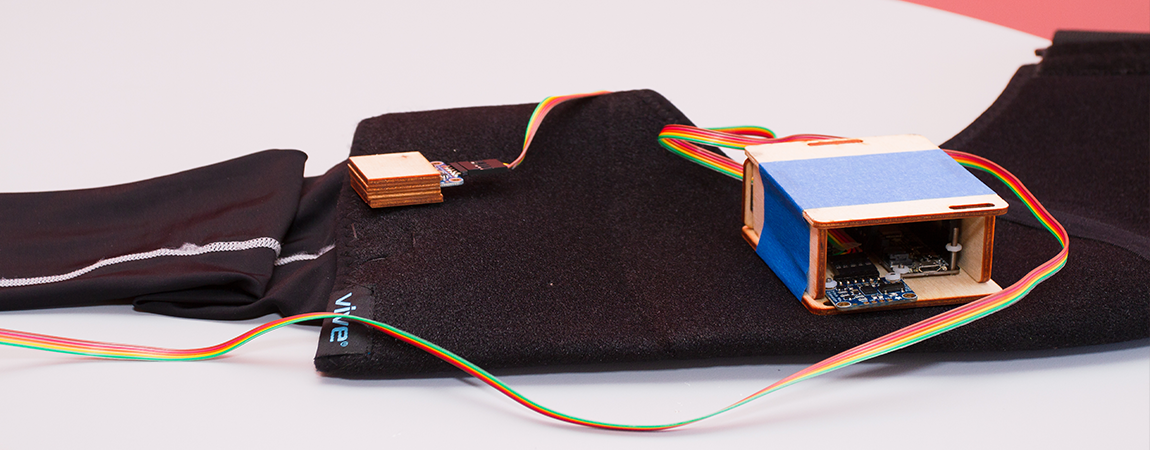Stroke is the fifth leading cause of death in US, killing over a hundred thousand people every year. The team builta device to measure the upper limb recovery process of stroke survivors and provided a way to assess their mobility.
Team: Ming Chien Chiang, Alex Michon, Gongo Yang
Advisor: Ruzena Bajcsy
Mentors: Robert Matthew, Christine Joseph, Joel Loeza
A stroke, also called “brain attack”, causes the death of brain cells due to an insufficient blood flow. This can lead to a loss of mobility on both upper and lower limbs. Recovery is a slow but crucial process which requires daily training. Our project focuses on upper limbs recovery. We designed a device that will assess the progress of stroke survivors by measuring the arm joint angles during a movement. We can then provide useful data to doctors to help them assisting their patients and adapting training to their progress.
Tracking arm joint angles:
In order to measure arm movements, we need to track several joint angles: torso, shoulder, elbow, and forearm.
One sleeve+ 3 IMUs:
Our device should be easy to use for people with reduced mobility, Therefore, it must be lightweight and it must be simple to put it on. We combined two sleeves: one that covers the shoulder and one that covers the upper and lower arm. Inertial Measurement Units (!MU) are sensors that provide three types of data: acceleration, angular velocity and magnetic field. We place three IMUs at key position on the sleeve:
- One on the back, close to the neck
- One on the arm, just above the elbow crease
- One on the forearm, close to the wrist on the anterior side
Movement reconstitution:
After performing a training exercise, we can analyze !MU data to reconstitute the arm movement and compute the joint angles. A calibration phase is necessary to determine the positions of the three IMUs on the body. The !MU data can be transformed to get the orientation of each sensor. Given the orientation of a sensor and its relative position on a limb, we can easily compute the orientation of this limb. This gives us the orientation of each limb, which is equivalent to the joint angles.
An Android application to control the data flow:
We developed an Android application to control the device. Functionalities of the application include:
- Receiving !MU data using Bluetooth Low Energy (BLE)
- Displaying instruction on the movement to execute (with tutorial videos)
- Displaying joint angles in real time
- Sending data to a web server to store data in a SQL database
Validation using Motion Capture
To test the accuracy of our device, we compared our results with Motion Capture. Motion Capture is a technique to track movement using markers and cameras. We were able to achieve an average error below 10°.

← View all Capstone Projects





